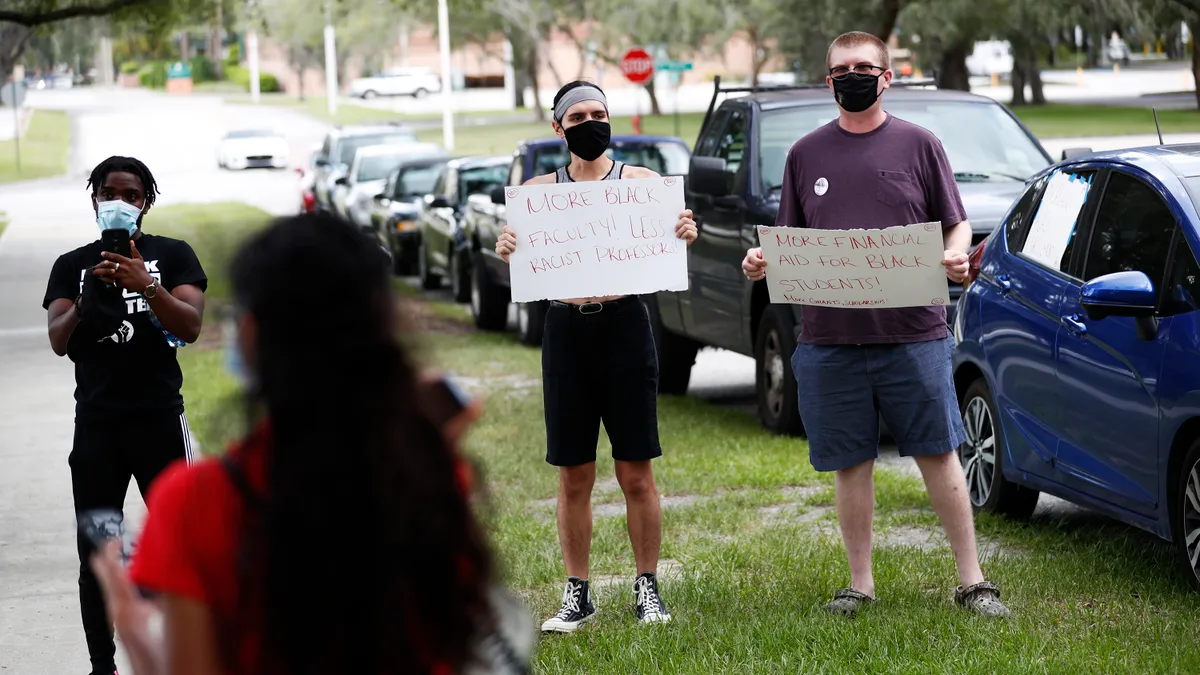Teresa Valerio Parrot is the principal and Erin Hennessy is the vice president of TVP Communications, a national public relations and crisis communications agency solely focused on higher education.
As communication consultants, we're often brought in to help the leadership of colleges and universities navigate some of their biggest challenges. More and more, that means issues involving diversity, equity and inclusion, or DEI.
It's important work. But often it's work we aren't equipped to complete. For us to help you report that you take DEI seriously and have moved the needle on campus climate, you need to have done something and have some indicators that show it's working.
College and university presidents and chief diversity officers aren't alone in struggling with how to move forward in meaningful, specific ways to make their institutions' cultures more inclusive. But without digging in and doing the work to chart a course, there's nothing to communicate.
The urge to put communications before progress is understandable based on the expectations for immediate change. The rate at which colleges can realistically make substantive progress on big, complex, and nuanced challenges can be infuriatingly slow. Sending a message is something that can be done today to try to quell pushback as opposed to channeling effort and energy for a longer, sustained effort with greater impact. And for presidents with numerous mounting issues on campus, it can be tempting to cave to time pressure and the sometimes unrealistic expectations our communities have for how fast improvements can be made. But we urge leaders to avoid resorting to empty words and stick with the hard work.
We ask leaders to stop thinking of campus climate and diversity feedback and demands as something to be dodged or survived. The reality is DEI topics garner campus, media and social media attention because they tell first-person stories and outline changes our communities need. Based on the emotion associated with these calls for action, leaders push themselves for what feels like immediacy and end up with half-baked processes that are not ready to be shared with the community.
We advise against oversharing plans for achieving a more inclusive culture before building the infrastructure, feedback loops, wraparound services and other supports necessary for success. Otherwise, those plans don't match the community's lived experience and become performative. Communicators can only share change that has occurred or is planned, and we need the institution's efforts to have the gravitas demanded by the moment and match the community's expectations.
This is particularly important as colleges and universities prepare to welcome back students, faculty and staff.
They are likely not patiently waiting for the resumption of DEI initiatives post pandemic. Their expectations of campus leaders have only grown while we've all focused on COVID responses. Our internal audiences do not want to — and should not have to — wait any longer to feel comfortable and welcome in academia. A lack of progress in creating inclusive communities will rightly be cause for criticism that performative communications can never fix. Rhetorical statements are no substitute for being able to say with details and resources, "Here's what we've done. Here's what we still need to do. Here's what you can expect from us. Here's what comes next."
Presidents should provide a substantive update on DEI work to their communities as the fall semester begins and outline the resources they are willing to commit to move efforts forward meaningfully. In preparing this update, they should include those tasked with and accountable for diversity and equity work in the communications rollout. Many campuses have diversity officers or other campus leaders who can provide depth to the institution's work but who often aren't included in leadership messaging. Often these campus leaders have access to insight into what the campus wants to hear and from whom. This level of tailoring shifts a message from seemingly empty words to instead reflect campus needs.
Certainly, diversity progress doesn't just live with the chief diversity officer or the president, and work must be done across the institution. All campus community members should be accountable for growth and change. But bringing a communications consultant in to address climate and diversity issues on campus only works if the problem is communications. If the issue is that leadership isn't doing what was promised or isn't working in a substantive way to lead the community, then bringing in any communicator as a fixer will leave leadership that much more vulnerable. And even the most skilled communicator can't communicate an institution out of that leadership void.














